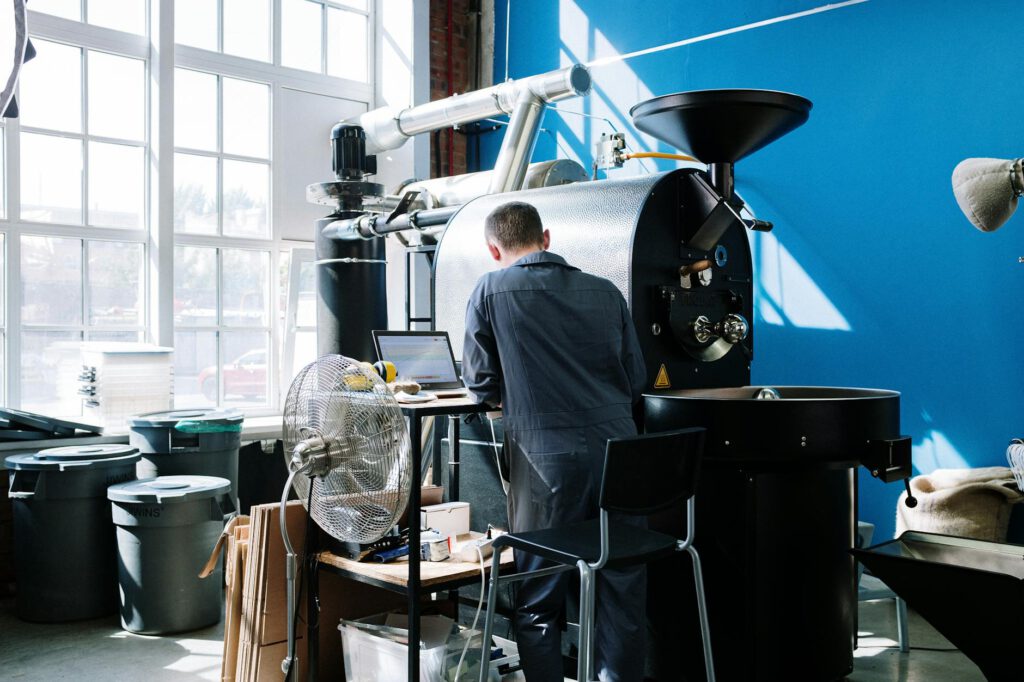****
Introduction
Early morning classes can be a struggle for students and faculty alike. Between groggy minds and rushed routines, a caffeine boost often becomes a necessity rather than a luxury. But what if you could bring the coffee shop experience directly to campus? A DIY coffee cart is an innovative, cost-effective solution that not only fuels early risers but also fosters community engagement.
By partnering with local roasters, you can elevate your coffee cart from a simple caffeine station to a premium experience that supports small businesses. This guide will walk you through the entire process—from planning and setup to sourcing beans and marketing your cart—ensuring your morning coffee service is a hit.
Why a DIY Coffee Cart?
A mobile coffee cart offers flexibility, affordability, and a personal touch that big-chain coffee shops can’t match. Whether you’re a student group, a campus organization, or an entrepreneurial faculty member, running a coffee cart can:
- Provide a steady revenue stream (if selling) or a morale-boosting perk (if free).
- Strengthen ties with local businesses by sourcing beans and supplies nearby.
- Reduce waste by using reusable cups and compostable materials.
- Create a social hub where students and staff can connect before class.
Now, let’s break down how to make this idea a reality.
1. Planning Your Coffee Cart: Budget, Location, and Permissions
Before brewing your first cup, you’ll need a solid plan.
Budgeting
Start by estimating costs:
– Equipment: A portable espresso machine ($200–$600), grinder ($100–$300), and insulated dispensers ($50–$150) for drip coffee.
– Supplies: Cups, lids, stirrers, milk alternatives, sweeteners, and napkins.
– Coffee Beans: Partnering with local roasters can reduce costs (more on this later).
Pro Tip: Crowdfunding or student organization funds can help cover initial expenses.
Location & Permissions
- High-Traffic Spots: Near lecture halls, libraries, or student unions.
- Campus Rules: Check with administration for permits, health regulations, and electricity access.
- Weather Plan: Have a pop-up tent for rain or harsh sunlight.
2. Partnering with Local Roasters: A Win-Win Strategy
Sourcing beans locally ensures freshness, supports small businesses, and gives your cart a unique selling point.
How to Approach Roasters
- Research Nearby Roasters – Look for those with sustainable practices or student discounts.
- Propose a Partnership – Offer promotion in exchange for wholesale pricing or sponsorship.
- Collaborate on Branding – Feature the roaster’s logo on your cart or social media.
Example: The University of Oregon’s student-run cart partners with a Eugene-based roaster, offering exclusive blends that attract coffee enthusiasts.
3. Setting Up Your Cart: Essential Equipment
You don’t need a full café setup—just the basics:
Must-Have Tools
- Portable Espresso Machine (e.g., Wacaco Nanopresso for budget options).
- Manual or Electric Grinder – Freshly ground beans taste better.
- Insulated Carafes – Keep brewed coffee hot for hours.
- Eco-Friendly Serveware – Biodegradable cups or a “bring your own mug” discount.
Optional Upgrades
- Milk Frother – For lattes and cappuccinos.
- Syrup Dispensers – Vanilla, caramel, or seasonal flavors.
- Solar-Powered Cart – If outdoors and sustainability is a priority.
4. Streamlining Operations: Efficiency Tips
Morning rushes can be chaotic. Keep things smooth with these strategies:
- Pre-Grind Beans – Save time during peak hours.
- Batch Brewing – Prepare large quantities of drip coffee beforehand.
- Self-Serve Station – Set up sugars, lids, and straws for quick access.
- Volunteer Shifts – Rotate team members to avoid burnout.
5. Marketing Your Coffee Cart
Even the best coffee needs promotion. Try these tactics:
- Social Media Teasers – Post behind-the-scenes prep or announce special blends.
- Loyalty Cards – “Buy 5 coffees, get 1 free.”
- Themed Days – “Matcha Monday” or “Free Coffee Hour” to attract crowds.
Tools & Resources
- Budget Tracker: Google Sheets or Mint for expense management.
- Local Roaster Finder: Specialty Coffee Association’s directory.
- Eco-Friendly Supplies: Brands like Eco-Products or World Centric.
FAQs
Q: How much should we charge per cup?
A: Price competitively—$2–$4 depending on campus coffee shop rates.
Q: Can we operate without electricity?
A: Yes! Use a thermos for pre-brewed coffee or a hand-powered grinder.
Q: What if we run out of coffee?
A: Track sales trends and adjust brewing quantities weekly.
Conclusion
A DIY coffee cart is more than just a caffeine fix—it’s a community builder, a small-business supporter, and a creative campus project. By partnering with local roasters, optimizing your setup, and engaging students, you can turn early morning groans into grateful smiles.
Ready to brew success? Start planning your cart today and watch your campus wake up happier—one cup at a time.

